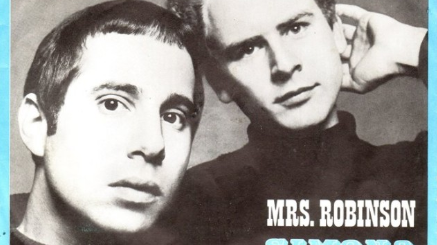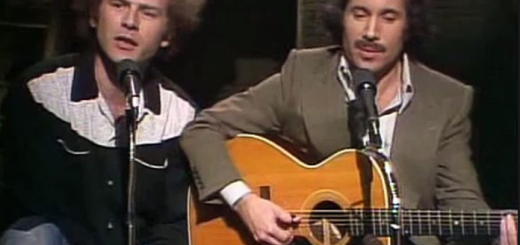At the Zoo by Simon & Garfunkel Lyrics Meaning – Unlocking the Allegorical Journey Behind the Melody
- Music Video
- Lyrics
-
Song Meaning
- The Monkeys and the Giraffes: Diving into Honesty and Insincerity
- A Zookeeper Fond of Rum: Decoding the Role of Human Caretakers
- Reinventing the Claw: The Hidden Meaning of Simon & Garfunkel’s Zoological Metaphor
- Conspiracies and Turncoats: What Pigeons and Hamsters Tell Us About Subterfuge
- What a Gas!: The Memorable Lines That Echo Through Generations
Lyrics
I do believe it
I do believe it’s true
It’s a light and tumble journey
From the East Side to the park
Just a fine and fancy ramble
To the zoo
But you can take the crosstown bus
If it’s raining or it’s cold
And the animals will love it if you do
If you do, now
Somethin’ tells me it’s all happening at the zoo
I do believe it
I do believe it’s true
The monkeys stand for honesty
Giraffes are insincere
And the elephants are kindly but they’re dumb
Orangutans are skeptical
Of changes in their cages
And the zookeeper is very fond of rum
Zebras are reactionaries
Antelopes are missionaries
Pigeons plot in secrecy
And hamsters turn on frequently
What a gas, you gotta come and see
At the zoo
At the zoo
At the zoo
At the zoo
At the zoo
At the zoo
At the zoo
At the zoo
With its jaunty tune and playful lyrics, ‘At the Zoo’ by Simon & Garfunkel may seem like a charming ode to a simple visit to the animal kingdom. However, beneath the light-hearted surface lies a labyrinth of meaning, ripe for exploration.
The 1967 track from the duo’s album ‘Bookends’ is a rich canvas painted with metaphors that at its core critiques societal norms and human behavior. Through a seemingly innocent trip to the zoo, Simon & Garfunkel draw us into a deeper conversation about the world we inhabit.
The Monkeys and the Giraffes: Diving into Honesty and Insincerity
What might at first glance appear as a simple and whimsical song quickly unfolds into an allegorical tale. The monkeys’ stand for honesty is a curious beginning. In an era overwhelmed by a facade of conformity, the monkeys symbolize a raw and unabashed truth that many were desperate to find.
On the flip side, giraffes as symbols for insincerity may reference a time when deceit was a tall order, towering over the populace, shaped by a culture that valued appearance over authenticity. This verse serves as a commentary on social mores and the superficiality pervading human transactions.
A Zookeeper Fond of Rum: Decoding the Role of Human Caretakers
The zookeeper’s affinity for rum paints a vivid character who may very well represent the often self-medicating society, trying to cope with a world veiled in complexity. The custodian of the zoo is perhaps more akin to the guardians of societal norms, inebriated with power or the need for escape, leaving the creatures under his care to fend for themselves.
This role of the zookeeper beckons at the lack of sobriety in the hands that shape our systems. It swings at the powerful yet sometimes irresponsible force that crafts the cages in which we all live.
Reinventing the Claw: The Hidden Meaning of Simon & Garfunkel’s Zoological Metaphor
Each verse in ‘At the Zoo’ is carefully orchestrated to peel back layers of perception, revealing a societal critique. The song beckons us to redefine our approach to engaging with the world. The animals in their cages mirror the confinement within human constructs—be it norms, ideologies, or relationships.
Simon & Garfunkel push the listener to question the very nature of change and our reaction to it. The skepticism of orangutans questions resistance to progress, while the ‘changes in their cages’ subtly signify refreshing introspection in our societal roles.
Conspiracies and Turncoats: What Pigeons and Hamsters Tell Us About Subterfuge
The mention of pigeons plotting lends itself easily to interpretations of political subterfuge or corporate espionage that was as relevant then as it is now. The hidden interplays of power extend beyond the park and into the human jungle.
Meanwhile, the hamsters ‘turn on frequently,’ not just referring to their wheel-going antics, but also symbolizing the fickle nature of human alliances and the volatility of public opinion.
What a Gas!: The Memorable Lines That Echo Through Generations
The conclusive phrase, ‘What a gas, you gotta come and see,’ is rendered in a tone of cynical amusement, offering an invitation steeped in irony. The song both mocks and marvels at the circus we’ve created, where observer and observed are one in the same.
These lines echo across generations as a call to witness the spectacle of society, to join in the dance between the absurd and the serious, and to perhaps find the joy in the contradictions that make us uniquely human.







